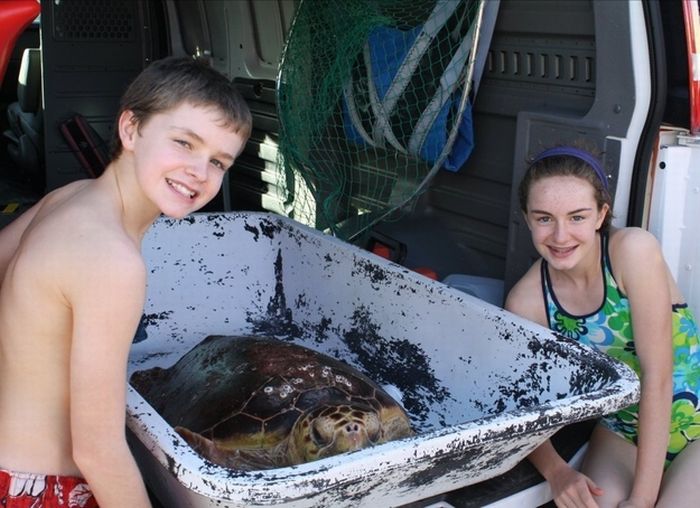|
|
Puffer Fish Against A Sea Turtle
|
Ecology and behavior
Loggerhead sea turtles observed in captivity and in the wild are most active during the day. In captivity, the loggerheads' daily activities are divided between swimming and resting on the bottom. While resting, loggerheads spread their forelimbs to about mid-stroke swimming position. They remain motionless with eyes open or half-shut and are easily alerted during this state. At night, captive loggerheads sleep in the same position with their eyes tightly shut and are slow to react. Loggerheads spend up to 85% of their day submerged, with males being the more active divers than females. The average duration of dives is 15–30 minutes, but they can stay submerged for up to four hours. Juvenile loggerheads and adults differ in their swimming methods. Juveniles keep their forelimbs pressed to the side of their carapace and propel themselves by kicking with their hind limbs. As the juveniles mature, their swimming method is progressively replaced with the adults' alternating-limb method. The loggerheads depend entirely on this method of swimming by the time they are one year old.
Water temperature affects the sea turtle's metabolic rate. Lethargy is induced at temperatures between 13 and 15 °C (55 and 59 °F). The loggerhead takes on a floating, cold-stunned posture when temperatures drop to approximately 10 °C (50 °F). However, younger loggerheads are more resistant to cold and do not become stunned until temperatures drop below 9 °C (48 °F). The loggerheads' migration helps to prevent instances of cold-stunning. Higher water temperatures cause an increase in metabolism and heart rate. A loggerhead's body temperature increases in warmer waters more quickly than it decreases in colder water. The loggerhead sea turtle's critical thermal maximum is currently unknown.
|
|









